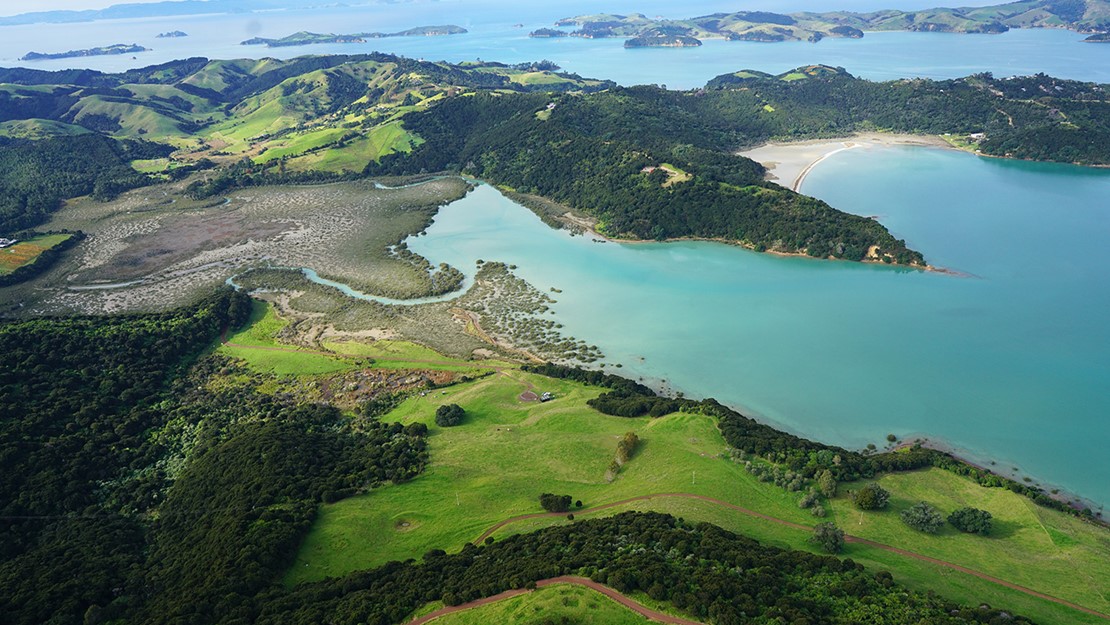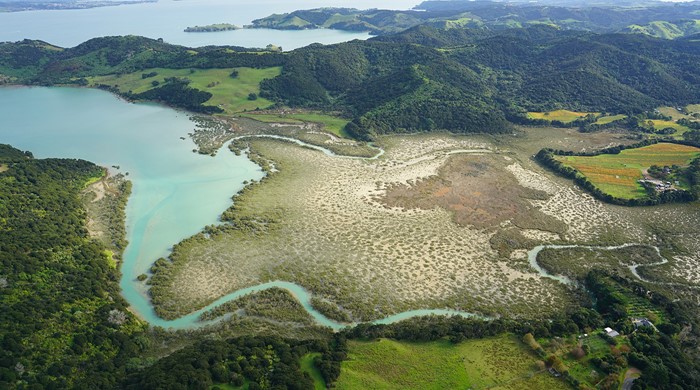Te Matuku Bay
Size: 150 hectares
Area description
Te Matuku Bay biodiversity focus area is situated on the south coast of Waiheke Island. It has one of the largest and least disturbed estuaries and the best estuarine to forest ecosystem sequence on the island.
This biodiversity focus area includes Te Matuku Bay Scenic Reserve and a number of esplanade reserves.
Te Matuku Bay Marine Reserve protects the marine environment within the bay. This includes eel grass and shellfish beds on the mudflats, mangroves and saltmarsh, and two shell barrier beaches on the eastern side of the bay (SA1).

Key ecosystems
This biodiversity focus area includes extensive intertidal flats, shell barrier beaches and shell banks, low-lying islands, freshwater wetlands, native forest and regenerating scrub. The habitat value is considered to be of national significance. Shell barrier beaches are nationally identified as a Naturally Uncommon ecosystem.
The hillslopes are covered in a mosaic (mix) of:
- mature and regenerating coastal broadleaved forest (WF4)
- kauri, podocarp, broadleaved forest (WF11)
- kānuka forest and scrub (VS2).

Native fauna
Te Matuku shell barrier beaches and shell banks provide important roosting and nesting areas for native and migratory shorebirds. Tūturiwhatu (New Zealand dotterel), tōrea pango (variable oystercatcher) and taranui (Caspian tern) all nest on the shell barrier beaches.
Migratory species found here seasonally include:
- kuaka (godwit)
- huahou (red knot)
- ngutuparore (wrybill)
- tōrea (South Island pied oystercatcher).
Pohowera (banded dotterel), tara (white-fronted tern) and matuku moana (reef heron) are also found from time to time in the bay. Secretive wetland birds pūweto (spotless crake) and matuku-hūrepo (Australasian bittern) have been recorded in the wetlands.
The forest vegetation provides habitat for birds including:
- kererū
- riroriro (grey warbler)
- tauhou (silvereye)
- tūī
- pīwakawaka (fantail)
- kōtare (kingfisher)
- ruru (morepork).
Kākā and pīpīwharauroa (shining cuckoo) are also present for part of the year. The freshwater streams provide habitat for species including kōura (crayfish), banded kōkopu (cockabully) and tuna (eels).



